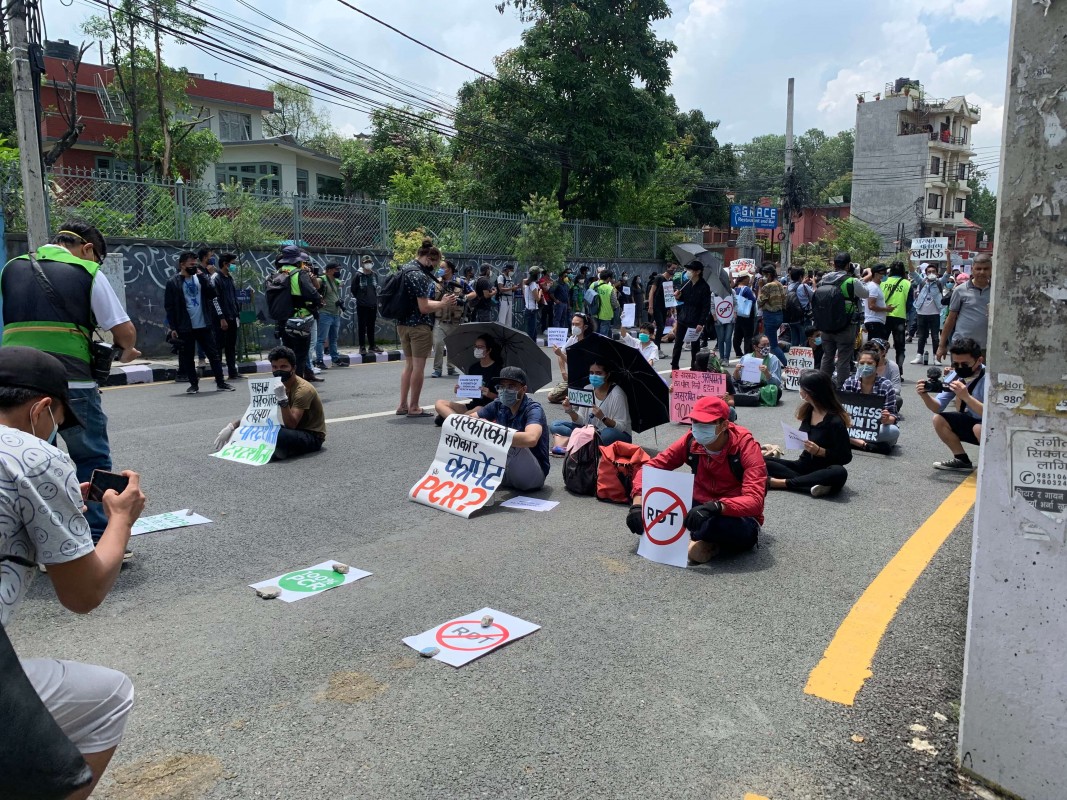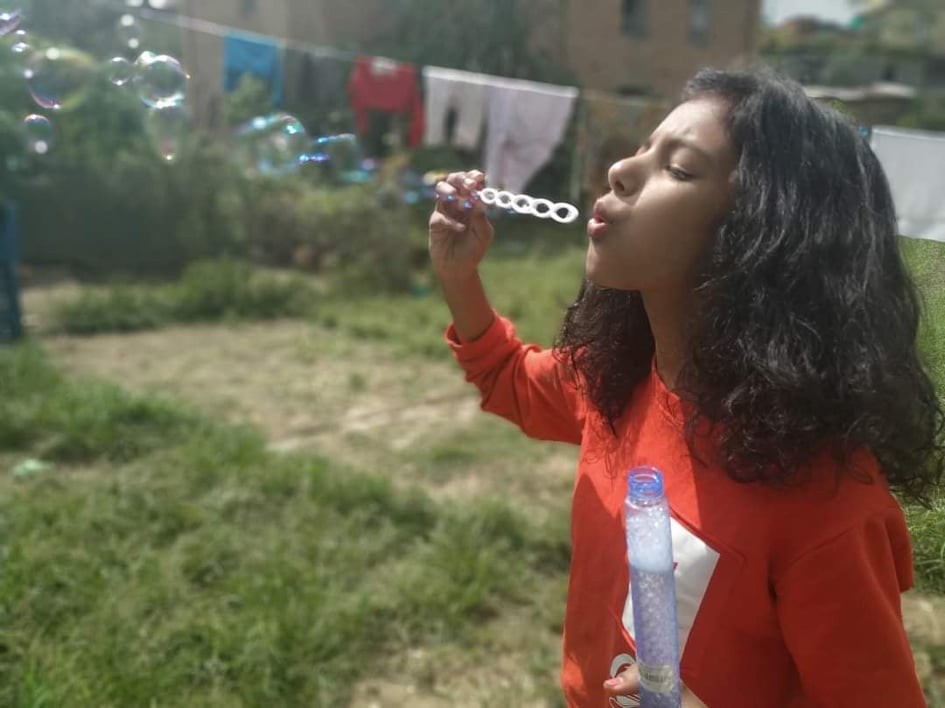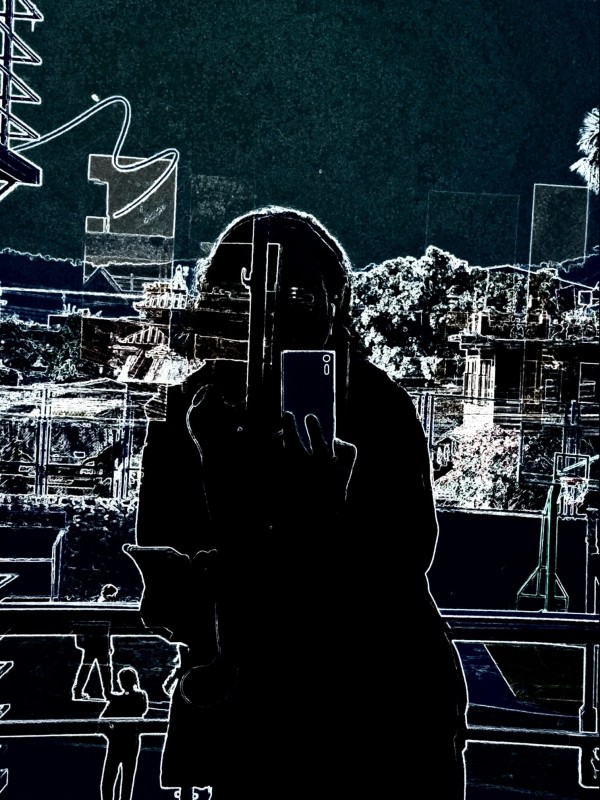Baluwatar Protest: Youth Warns that the Nation has had enough

 Ankur Chhipi Mourya
Ankur Chhipi Mourya
On 9th June, a group of youths and activists held a protest in front of the Prime Minister's residence, Baluwatar. It demanded better handling of the pandemic by the Nepalese government. Despite the protest being peaceful and the protesters following social distancing measures, the police used lathi-charge and water cannons on them; some were even arrested. The protest was part of a collective movement that is taking form throughout Nepal. As the youths from Kathmandu, Dharan, and Surkhet came on streets; what was it really for and why did the government seem so anxious to shut them up? Nepal was put under lockdown on March 24th, to curb the spread of COVID-19. It has been 78 days since. With one of the world’s longest lockdowns, the government has completely failed to handle the pandemic. With thousands of migrant workers entering the country through the southern border every day, the quarantine centers remain ill-managed and testing unavailable. The whole nation has taken a hard hit but the daily wage workers and food insecure citizens are suffering the most. The hospitals aren’t prepared to handle the surge in cases. And the corruption is at its peak. Thousands of migrant workers have been entering Nepal through Surkhet, Birgunj, Karnali, and other borders daily. In all, about 2.8 million Nepalese people work abroad and most of them are headed back home. Around 170,000 are already in the quarantine centers across the country, many of which even lack drinking water and toilets. Some centers have 10-15 people packed in a single room, failing to provide safe space for women, children, minorities, and sick people. The government has also been unable to provide testing for them, despite those people having a higher possibility of transmitting the virus. And those who are even tested, the tests are usually Rapid Diagnostic Test (RDT). Although the RDT test is not recommended by the WHO and health experts, the emphasis on this test appears very irresponsible. 166,158 RDT tests have been conducted to date and the government has planned to conduct 5 million more. According to the Epidemiology and Disease Control Department, a startling 71.8% of the cases in Nepal are asymptomatic. And all of those cases are PCR testing ineligible, as per the testing guidelines. The guideline also recommends not retesting any confirmed cases that do-not display symptoms after 14 days- a significant deviation from the internationally accepted protocol requiring two negative PCR results before confirming a patient as COVID negative. With businesses, industries, and other sectors shut; the economic status of Nepal has taken a hard hit. Nepal’s economy is expected to suffer a loss of 1.4 billion which comes in sharp contrast to the government's ambitious 7 percent growth plan. Around 1/4th of the Nepalese population relies on remittance, millions on daily wages, and 1/6th of the population is food insecure. Over 2.1 million malnourished children under the age of 5 are in a severe threat as 22 nutrition rehabilitation homes around Nepal have been turned into quarantine centers and quarters for health workers. People are struggling to feed themselves but the government seems uninterested in their struggles. Lack of living support for families and stimulus packages for businesses has left the whole nation uncertain of what life after pandemic holds for them. As the COVID-19 cases are seeing a surge, the hospitals around the nation don’t look like they’re prepared to face it. Almost half of health infrastructures destroyed during the 2015 earthquake haven’t seen a replacement yet, making the country run low on resources. Nepal has just one ventilator for 114,000 people. Most of the medical equipment is concentrated in the Kathmandu valley, making it inaccessible for people and provinces that really need them. The health workers are forced to put themselves at risk due to a lack of personal protective gear. Nepal holds 113th position out of 180 countries in terms of transparency according to a global corruption watchdog, Transparency International. But the cases of corruption during this humanitarian crisis are merely a portrayal of how insensitive the government is towards its citizens. The government claimed to have spent 10 billion rupees at the central level alone to respond to the COVID-19 pandemic. But apart from the money that went into buying 5 Polymerase Chain Reaction Test Machines and 25 thousand test kits; nobody knows where the rest of the money went. On the pretext of emergency, the government tried to buy medical supplies from private companies, in a way that would allow few people to take advantage. The 10 million rupees carpet project at the President’s residence (the contract going to one of the parliament members) in such times is severely inconsiderate. But the saddest part is that the PM thinks he’ll get away with all of this. He believes that the mix of denial, misinformation, and nationalism will make the COVID-19 go away and Nepalese survive. To properly handle the pandemic, the government needs to better the quarantine centers, scale up the current testing by 40 times, and help the most economically vulnerable ones with financial assistance. The mistakes made by the government during this pandemic will result in many losing their lives. And the protest in Baluwatar was to warn the government that the nation and its citizens have suffered enough. It was also to remind every Nepali citizen that they still live in a democracy and if they want they can change how the government deals with the pandemic. .jpg)






